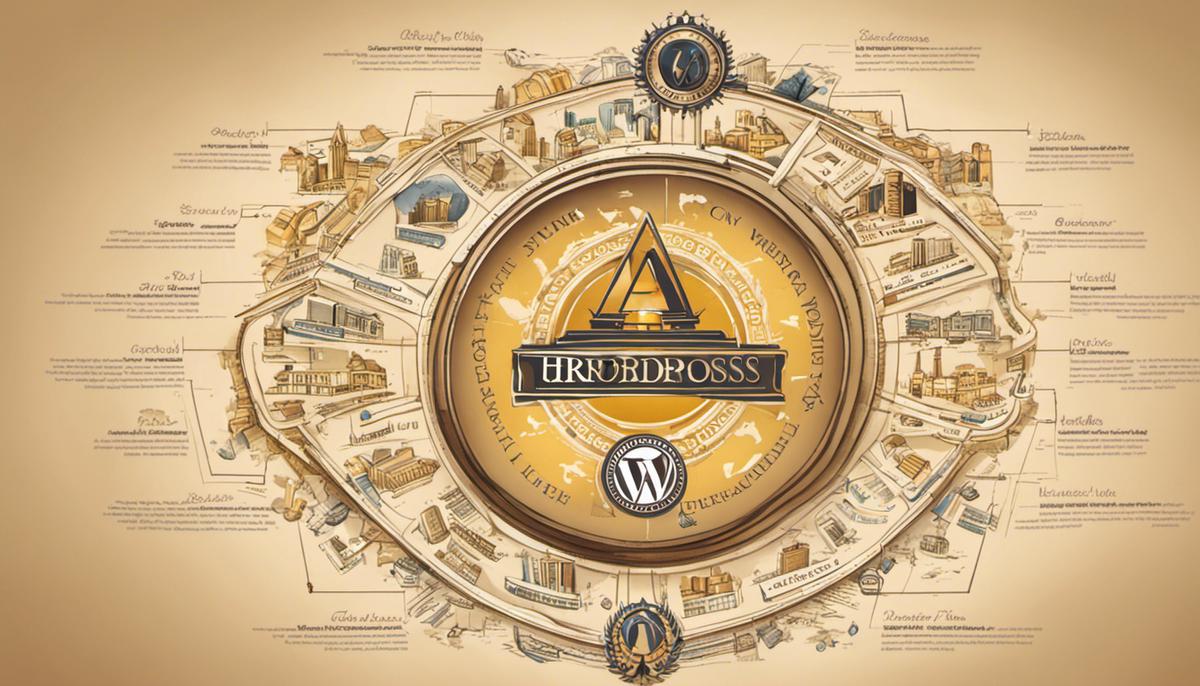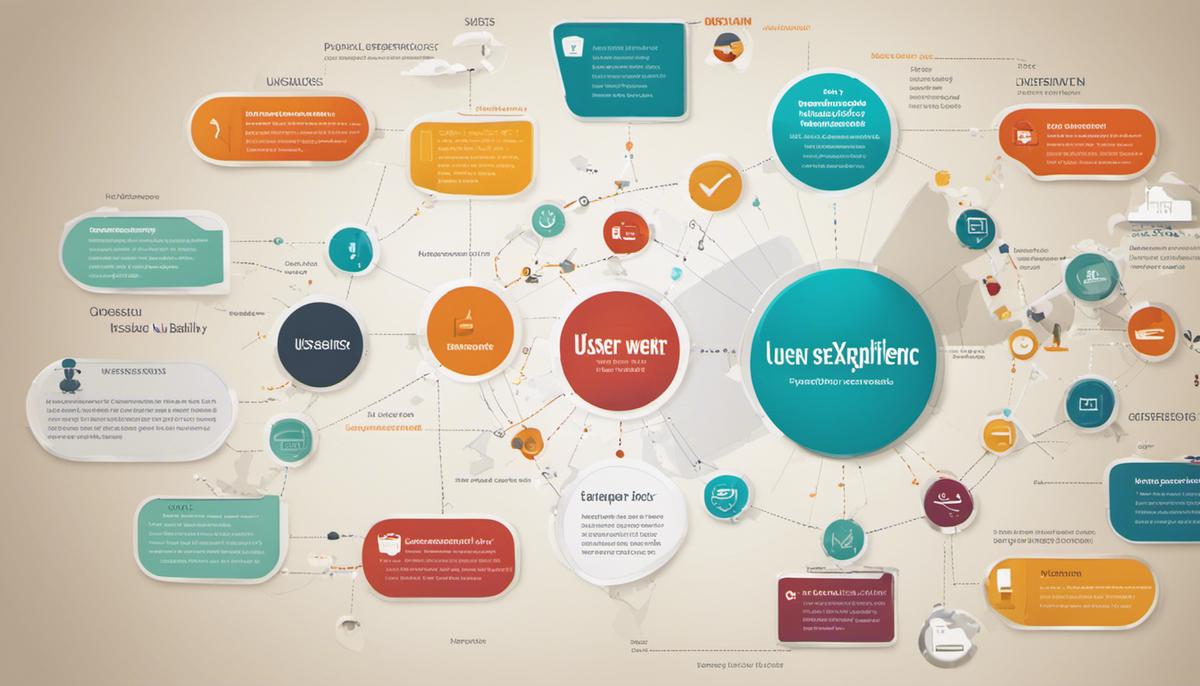Understanding scalability in Content Management Systems (CMS) is a vital aspect in the rapidly evolving digital landscape. As business needs fluctuate, and user demands increase, a CMS’s ability to accommodate expansion while maintaining efficient performance becomes a cornerstone for any successful online presence. In this discourse, critical topics such as scalability fundamentals in CMS, the challenges encountered, a review of scalable CMS platforms, trending technologies and best practices in implementing scalability will be comprehensively explored. The discussion aims to offer an in-depth grasp rather than a cursory overview, shedding light on how CMS platforms like WordPress, Drupal, and Joomla handle scalability, and how emerging technologies like AI, blockchain, and cloud computing are influencing CMS scalability.
Scalability Fundamentals in CMS
The landscape of digital content is vast, complex, and always evolving. With more data being created and consumed than ever before, the task of managing it all falls onto Content Management Systems (CMS). One of the crucial criteria that define the ability of a CMS to meet this demand is scalability. So, what are the key principles of scalability within these systems? Let’s delve into this crucial topic.
First and foremost, many confuse scalability with capacity. While capacity denotes the ability of a system to handle a certain amount of work, scalability describes the capability of a system to maintain or even increase its level of performance when the workload increases. In the context of CMS, the increase could be in traffic, content, or the number of transactions.
Perhaps the most important principle of scalability lies in the architecture of the CMS itself. The design should be such that it allows for both vertical and horizontal scalability. Vertical scalability refers to the CMS’s capacity to increase its size or power to manage increased loads. On the other hand, horizontal scalability refers to the CMS’s ability to divide and distribute loads across numerous servers.
Another core principle is a modular approach. CMS functionality should be split into loosely coupled modules like authentication, content storage, rendering, and search among others. This decoupled architecture not only aids in improving the system’s performance but also allows for better maintenance and troubleshooting.
A scalable CMS should also be equipped to handle a multitude of users, both administrators and visitors. This means it must efficiently manage user authentication and access controls without compromising on user experience or site performance.
Efficient handling of database transactions is another important factor that contributes to the scalability of a CMS. It should be capable of handling both high-volume read and write operations without any hiccups. This can be achieved through effective batch processing, caching, indexing and employing database sharding techniques.
In line with the principle of scalability, a good CMS should have the capability of automating content replication. Imagine a blog site, which suddenly gains traction and the traffic surges dramatically. In such a scenario, if the content replication is done manually, the site’s performance would be hindered and it might crash. To avert such situations, scalability would come into play where the CMS would automatically replicate the content across servers, maintaining the site’s performance and availability.
Lasty, efficient resource management is key to a scalable CMS. This involves adequate load balancing, which ensures even distribution of network traffic, optimal utilization of resources, reduced downtime and consequently, improved site performance.
To conclude, scalability isn’t a singular function or feature, but a combination of various principles and techniques working in harmony. A potent CMS solution must not only focus on delivering robust and flexible functionalities but also ensure its ability to scale up or down efficiently to meet dynamic user and content demands. When these principles of scalability are embedded into the core architecture of a CMS solution, it can undoubtedly stand the test of evolving data volumes and consumer expectations.

Photo by halacious on Unsplash
Challenges in CMS Scalability
Expanding on Scalability: Grappling With CMS Challenges
When digging deeper into the intricacies of a Content Management System (CMS), there doesn’t seem to be an ending portal of challenges, particularly in achieving scalability. The issue isn’t avoidable due to the increasing internet traffic and demand for simultaneous users. Despite understanding the architecture of scalable CMS and methods such as vertical and horizontal scalability, hurdles persist.
One of the key challenges is data consistency. When you scale vertically or horizontally, ensuring data consistency across multiple servers becomes exceedingly difficult. As more servers get added to the mix, the complex chore of synchronizing data across all servers rises significantly. This situation can lead to data fragmentation, redundancies, and, worst of all, conflicting information that hinders user experience.
Though CMS offers a modular approach to functionality, navigation can become exponentially harder as the system scales. As each module represents a specific functionality and use case, the system can become overwhelmingly complex for the user. A balance must be struck between comprehensive functionalities and an intuitive, user-friendly interface.
Security is another notable obstacle. With an expanded user base and extensive content demand comes increased vulnerability. While CMS systems generally provide efficient user authentication and manage access controls, keeping up with the mammoth task of security as the system scales can be challenging. Each new user brings a potential security risk, and as more content is added, vulnerability points grow proportionally.
Content replication, though ideal for better performance, can become a troublesome activity when dealing with large amounts of data. The process of automating content replication may cause delays, particularly during peak usage periods. Its inefficient handling may imperil the real-time performance of a website.
Finally, load balancing poses obstacles as resource management becomes crucial with an increase in user engagement. Even with sophisticated load-balancing techniques, the process becomes burdensome as the system scales. It necessitates constant monitoring and adjustments in line with the variations in traffic patterns and unexpected surges.
Looking forward, achieving scalability in CMS will require robust algorithms for data consistency, effectively designed modules, stringent security systems, efficient content replication, and precise load balancing. Only when these bottlenecks are addressed, can scalable CMS live up to its true potential.
In essence, in the realm of CMS, scalability is not merely about capacity expansion but also revolves around maintaining, or even enhancing, levels of efficiency, performance, and user experience in the midst of growth. Being aware of these challenges helps one better understand the role of tech innovators in overcoming them towards creating future-proof CMS platforms.

Review of Scalable CMS Platforms
To expand upon the existing framework of understanding the importance and depth of scalable CMS platforms, let’s delve into a few platforms renowned for their impressive scalability. Cutting through the clutter, it’s time to highlight some of the giants in this arena – WordPress, Drupal, and Joomla.
WordPress, often regarded as an aficionado’s favorite, holds the title of the world’s most popular and scalable CMS, powering over 35% of all websites globally. The primary reasons for its dominance range from its simplicity to use, a diversity of design options, and notable scalability. Its architecture is built using MySQL and PHP, allowing it to handle thousands of simultaneous connections and requests per second. Moreover, WordPress seamlessly integrates with almost all well-known databases and has an extensive plugins system, which drives its core functions and innovative features. This CMS platform can efficiently handle high traffic spikes, making it a prime choice for content-heavy websites.
Drupal, another heavyweight in the CMS field, is known for delivering robust, large-scale site applications. With scalability as one of its forefront features, Drupal can adequately support thousands of content nodes and concurrent users. Backed by a robust file system structure, Drupal’s architecture utilizes caching at several levels (page, block, and view), greatly contributing to its capacity to scale. It also provides extensive APIs for data manipulation, making content replication, access control management, and security incorporation a breeze.
Joomla, although slightly less popular than its counterparts, is another strong contender when it comes to scalable CMS platforms. Its escalating popularity is attributed to integrated caching, granular-level module loading, and comprehensive support for custom extensions. Joomla’s scalability shines through its capacity to support large amounts of data and users thanks to its robust library of extensions. It also boasts a multi-language support feature. Joomla’s advanced user management system, coupled with over 7,000 extensions, allows for customized navigation and improved scalability.
The vast landscape of CMS platforms offers differing attributes. Yet WordPress, Drupal, and Joomla stand out due in part to their impressively scalable architectures. However, it’s paramount to note that choosing the most suitable CMS depends largely on your specific site requirements, be they for a blog, e-commerce platform, or multinational corporate site.
Furthermore, the chosen CMS platform’s scalability should not merely focus on handling increasing data volumes or user traffic. Consideration for security challenges, load balancing, efficient module design, and precise content duplication procedures is also pivotal. It’s a delicate balancing act.
Whether you’re a novice developer or seasoned techno-maestro, understanding the trade-offs between different CMS platforms and their scalability will extensively inform your choice. The end game? A website or application that isn’t just impressive today, but remains robust and responsive to meet tomorrow’s ever-growing and dynamic user and content demands.

Emerging Trends and Technologies in CMS Scalability
A great content management system (CMS) is more than just adept in the present; it should thrive in the future. Tomorrow’s technology is at an invisible horizon, and all we can do is anticipate it. As we do, we find new aspects of CMS scalability taking center stage.
Artificial Intelligence (AI) elevates scalability to new standards. The integration of AI into CMS has already started reshaping the landscape, but its future potential is enormous. Machine learning algorithms can channel resources optimally, making impromptu decisions about load balancing when traffic spikes suddenly. Users can obtain relevant content intelligently curated by AI, enhancing content visibility and reducing wastage of computing resources.
Decentralization via Distributed Ledger Technology (DLT), like Blockchain, further enhances scalability. A CMS based on DLT isn’t tied down by a central server’s capacity, possibly eliminating downtime during heavy traffic periods. This feature can greatly enhance user experience while simultaneously ensuring data security and integrity, a paramount concern as cyber threats evolve.
Containers and serverless architectures reinvent scalability. Containers are self-contained application environments carrying their dependencies, which enhance content portability across different environments. On the other hand, serverless architectures allow modules of code to be executed on demand, scaling based on request volume. Both technologies revolutionize scalability, focusing on performance optimization rather than capacity extension.
Headless CMS is breaking traditional scalability boundaries. Without a front-end delivery layer, this CMS enables seamless content repurposing across multiple platforms. As consumers diversify their digital touchpoints, headless CMS architecture ensures a consistent experience across any device, enabling scalability to meet consumer behavior changes.
Microservices take a modular approach to the next level. Instead of a monolithic framework, microservices break the CMS into small, independent services interacting through APIs. When experiencing heavy user traffic, instead of scaling the whole CMS, only specific under-pressure services need to scale.
Multi-tenant architectures have promising prospects. In this model, a single instance of a software application serves multiple customers or “tenants”. This design allows for efficient resource management and smooth scaling from small to large user groups. It’s an ideal architecture for SaaS-based CMS providers striving to deliver customized experiences.
The future CMS will not be bound only to its base features or the environment it operates in; rather, it will be a dynamic entity, adapting its complexities and scaling to meet ever-evolving human and machine interactions. Emerging technologies are not only disrupting our ways of managing and consuming content, but they are also shaping the way we scale CMSs, providing a glimpse into the future of a truly scalable CMS.

Implementing Scalability in CMS: Best Practices
Now that the groundwork has been laid out to discuss the best practices for implementing scalability in a Content Management System (CMS), the focus will shift towards some of the more progressive approaches that maximize CMS productivity.
Artificial Intelligence (AI) is making a distinct impact on many sectors, with CMSs being no exception. AI technology is a powerful tool that can be used to auto-generate content, respond to user queries, offer personalized experiences, and facilitate predictive analytics. When incorporated into CMSs, these features can significantly reduce the manual workload, enabling scalability by allowing the CMS to handle more visitors and content without compromising on performance.
Turning to Distributed Ledger Technology (DLT), also known as blockchain technology, a decentralized approach to data management is taking root. Utilizing this technology enhances data security by eliminating the need for a central authority, again potentially reducing load. Moreover, the immutable and transparent nature of blockchains increases trust among users, a vital aspect for scaling any platform.
Next is the adoption of containers and serverless architectures. Containerization involves bundling an application along with its libraries, binaries, and configuration files into a single package, while serverless architectures disassociate the application from a specific server. These technologies allow for faster deployment, better resource utilization, and higher flexibility. They offer superb scalability opportunities by enabling efficient load distribution and instant provisioning of resources in response to workload fluctuations.
Headless CMS is another remarkable trend in CMS scalability. Unlike traditional CMSs where the frontend and backend are coupled, a headless CMS separates the two. This decoupling gives developers more flexibility to deliver content across various channels like mobile, web, IoT devices, and more. The application’s frontend can be scaled independently of the backend, enabling extensive flexibility and facilitating true scalability.
Microservices is another best practice for implementing scalability in a CMS. Instead of the traditional monolithic design, a microservices architecture breaks down an application into smaller, loosely-coupled services. Each of these services can be scaled independently depending on its load, thereby managing resources more effectively and ensuring better performance.
Moving towards the concept of multi-tenant architectures, this approach enables multiple users or groups (tenants) to share a single application while ensuring each tenant’s data is isolated from others. This model enables a substantial reduction in resources since one instance of the software caters to many clients, facilitating cost-effective scalability.
Looking ahead to the future of CMS, the acceleration towards more advanced technologies is transparent. Embracing these innovations not only ensures the CMS remains up-to-date but also declares a shift from being reactive to proactive, which is vital as we continue moving further into a technology-infused future. As the anticipation for what lies ahead grows, the firm grasp of an ever-evolving digital landscape only propels technology, especially when implementing scalability in a CMS.
In conclusion, building a scalable CMS requires a multifaceted approach. It’s not just about handling large amounts of data or massive user traffic, but also staying ahead in a fast-paced technological world. Whether through AI, DLT, containers, serverless architectures, headless CMS, microservices, multi-tenant architectures, or future advancements, scaling a CMS involves taking strategic steps towards a more efficient, agile, and flexible system.

Scaling a content management system effectively is a mix of art and science. It involves intricate processes and forward-thinking strategies that extend beyond conventional barriers. While there exist challenges, innovative solutions also abound, allowing us to turn these potential stumbling blocks into stepping stones. Working through the comparison of various CMS platforms and their scalability features afford us a broader perspective on the available options. Harnessing the power of emerging technologies not only keeps us abreast of the latest trends but also facilitates seamless adaptation. Lastly, adherence to proven best practices streamlines the entire process, ensuring that our CMS is not only scalable but achieves optimal performance. Thus, the aim is to implement well-founded scalability strategies in CMS and continuously progress in the face of evolving digital exigencies.






